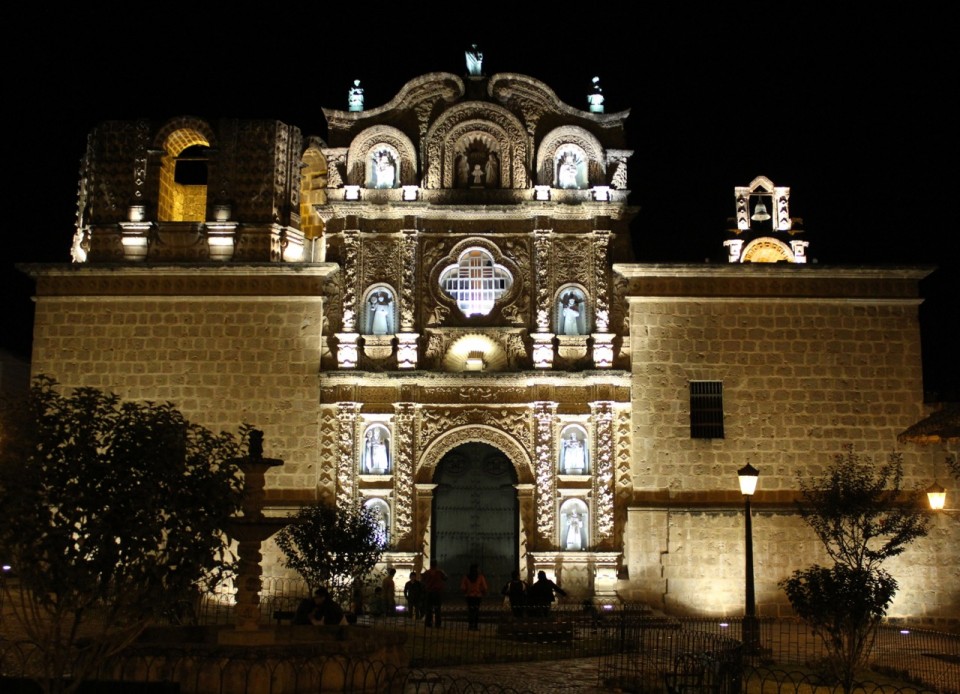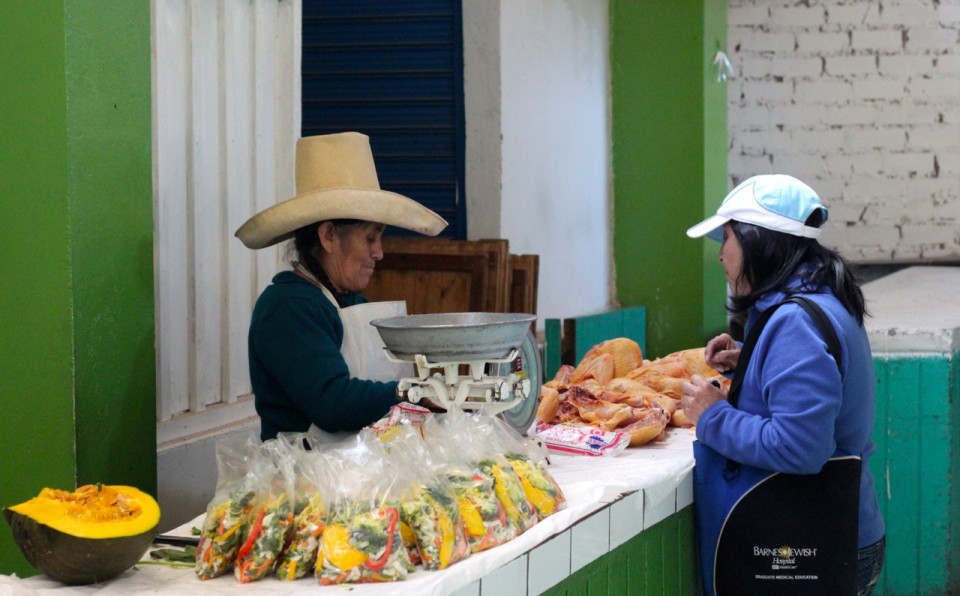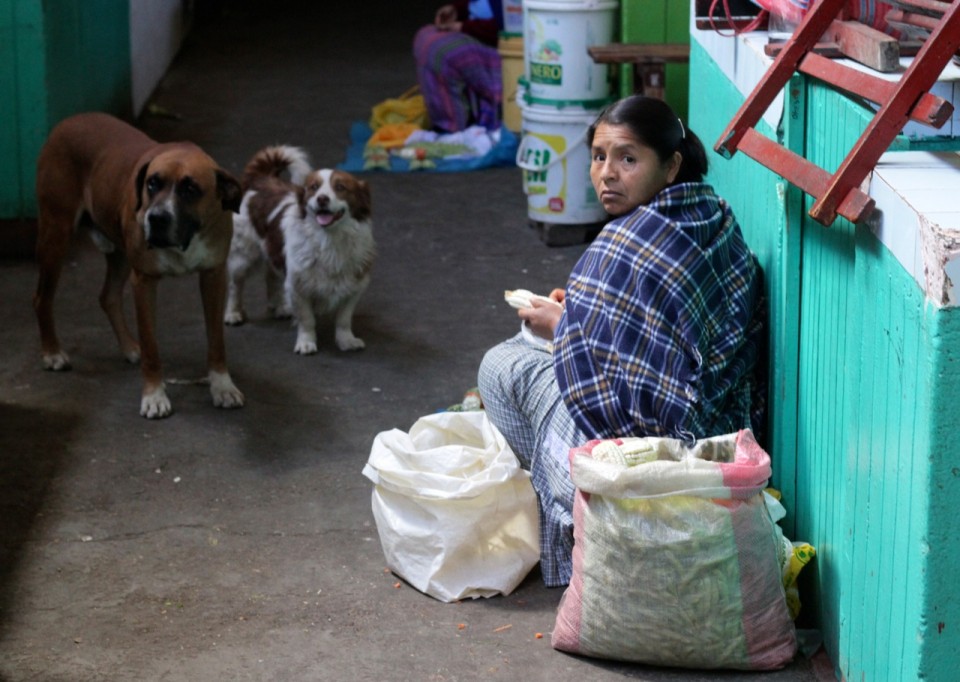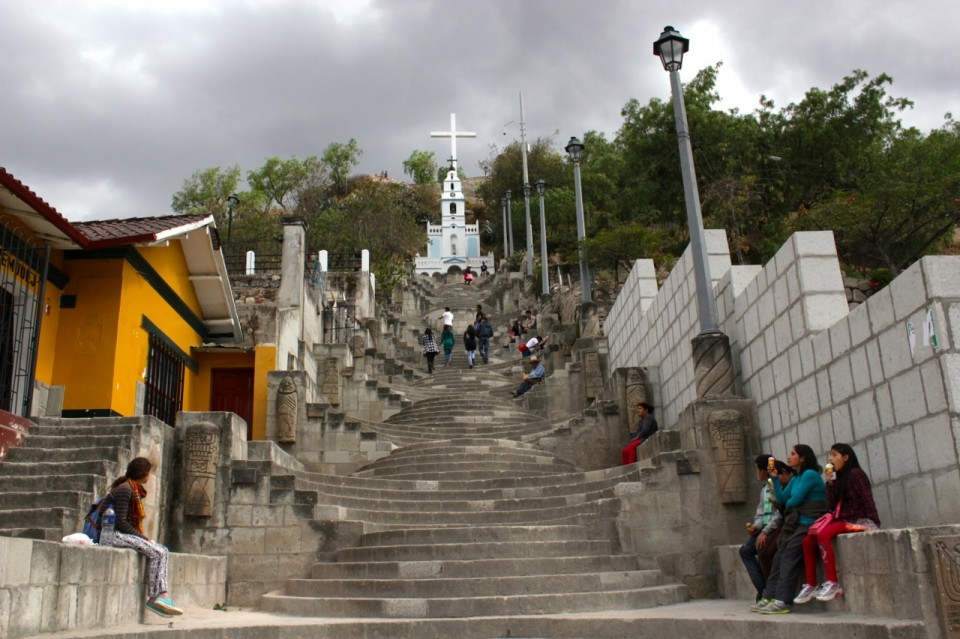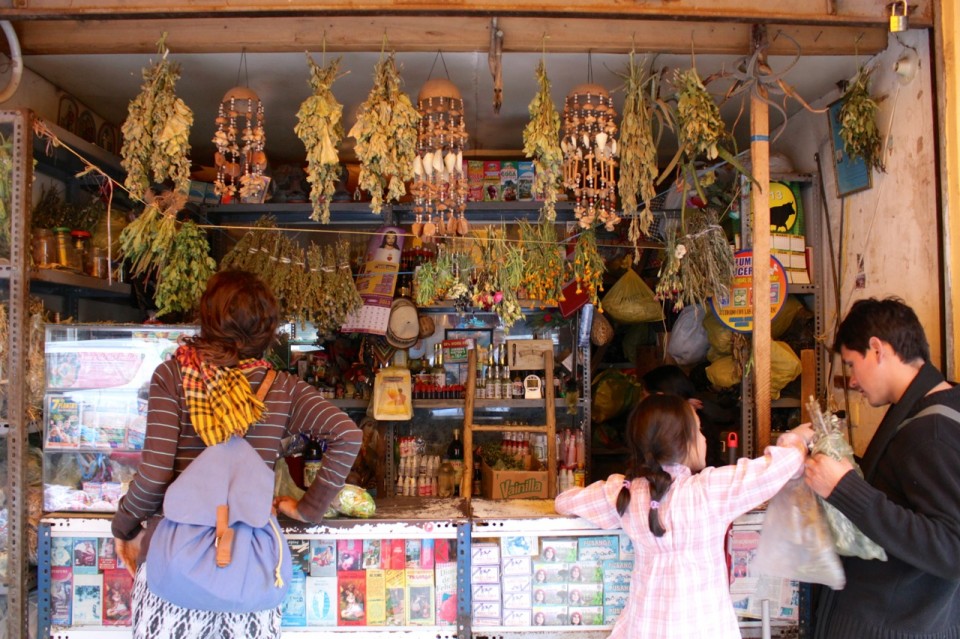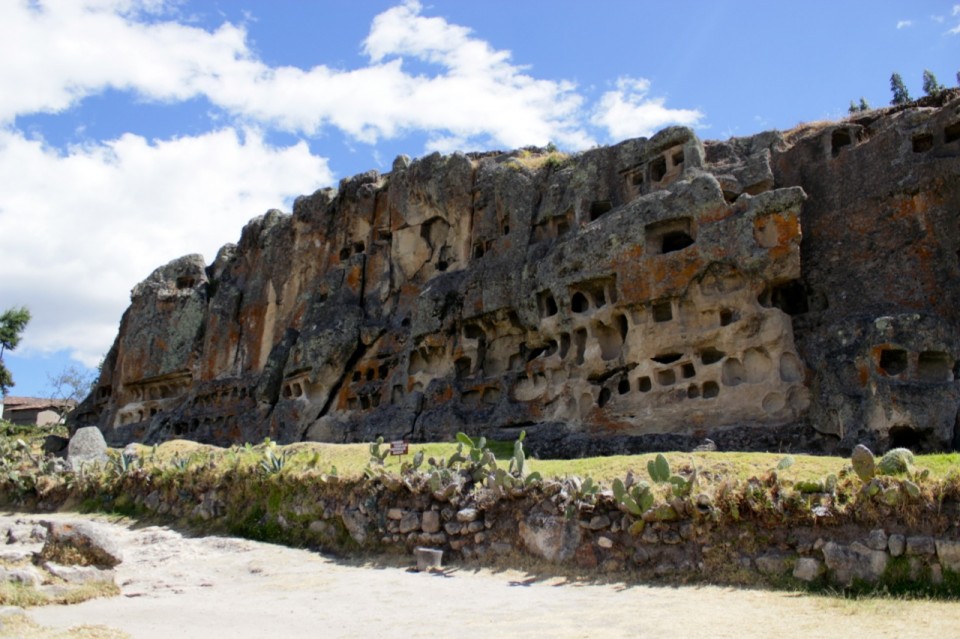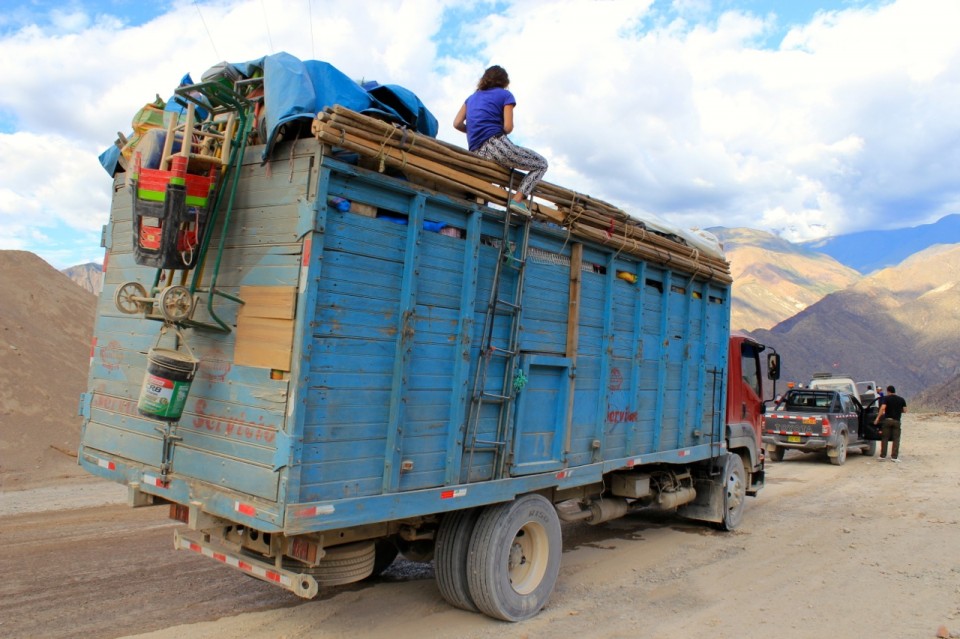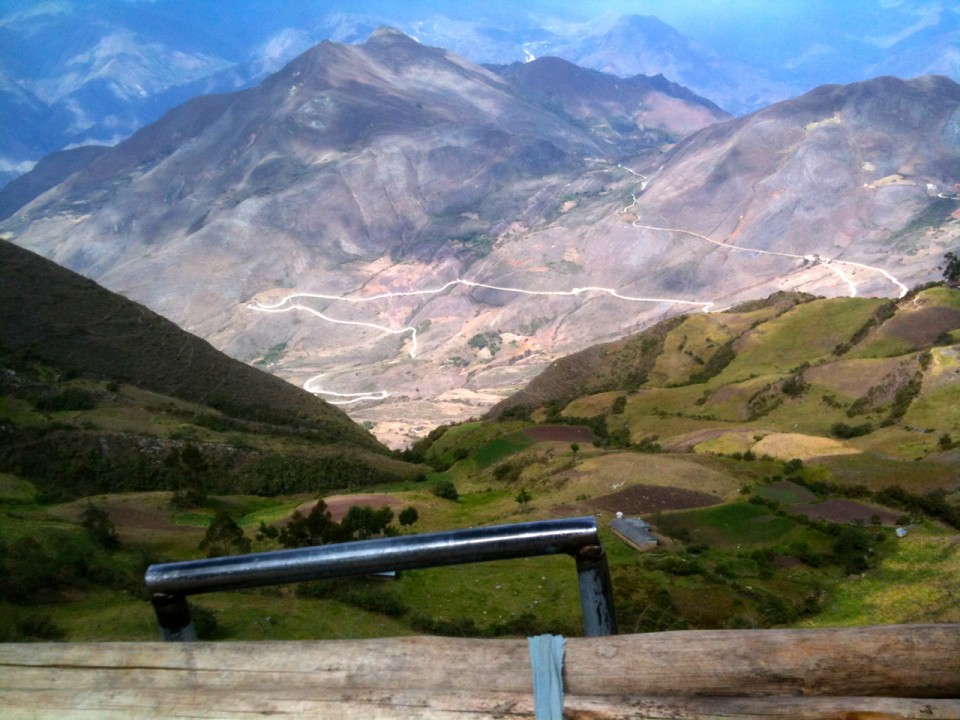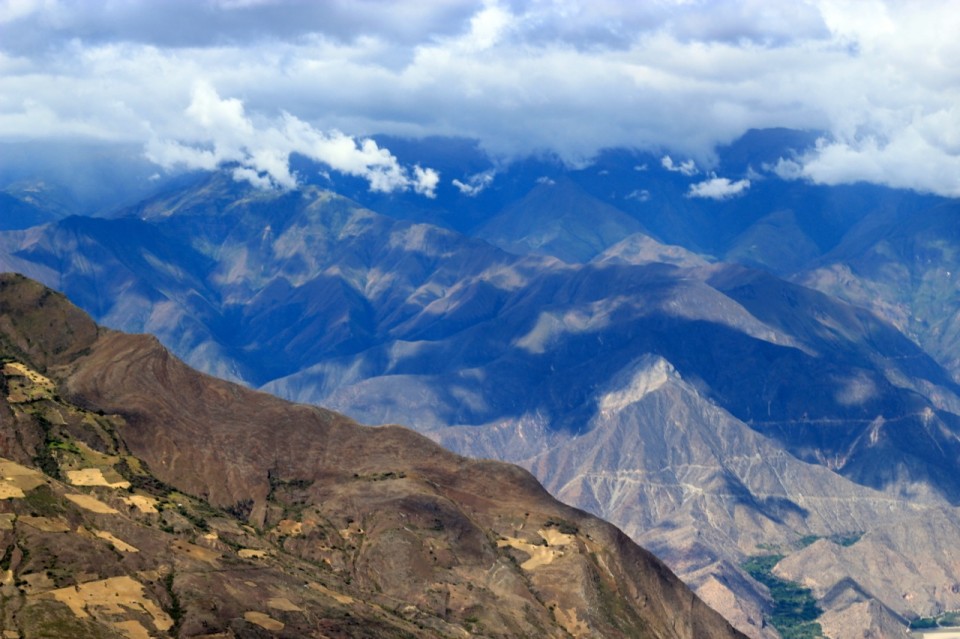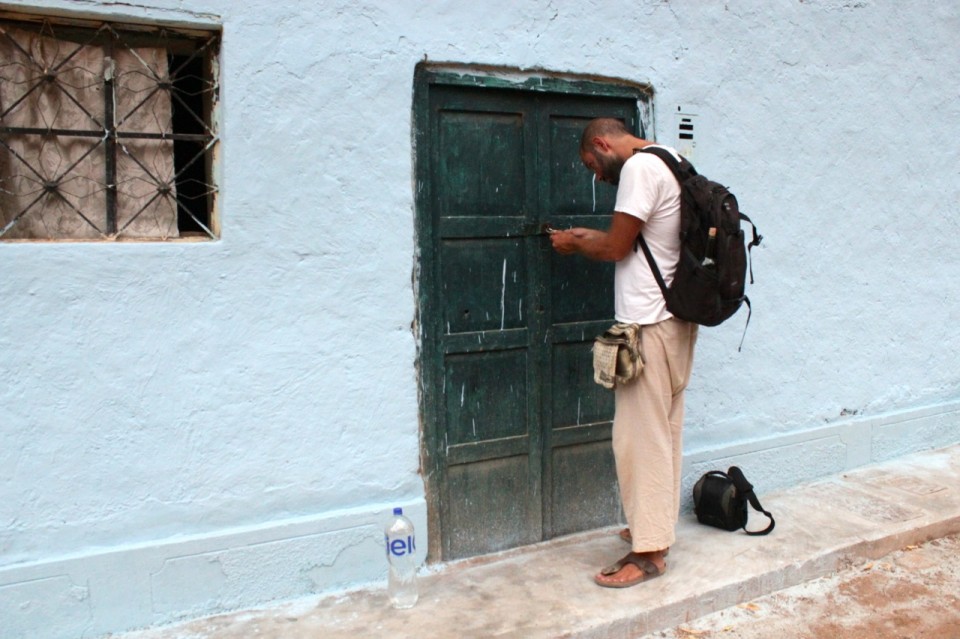After three weeks of volunteering in Mancora we were back on the road. We were back in action, happy, without any plans, with no idea where the road would take us. We had some idea of our route: we were planning to go eastwards, towards the jungle, but the rest – whatever comes along.
Soon we got lucky: after waiting less than ten minutes a man in a pick-up pulled over and agreed on giving us a ride for some 200 kilometers. We started talking to him and another two passengers; we didn’t even mind having to wait for a couple of hours in a small town for them to do something: nothing could ruin our day.
Or could it?
Uphill. We were driving slowly in a line with a truck in front of everyone; there was another pick-up behind it and then there were us. Double full line. We were getting closer to the end of the uphill. The top. The visibility was barely thirty meters. The vehicle in front of us started its suicide mission: the driver was overtaking the truck. And our driver did something even more stupid: he followed him.
In moments like those being a hitchhiker, just a passive observer in the back seat, isn’t the best thing in the world. When you’re driving with someone you know you can easily slap him in the face to make them come to senses when it comes to driving, but when you’re driving with a stranger who’s obviously doing you a favor, you can’t do a thing like that – your options are very limited. You can only look in front of you not saying anything, and hope that there won’t be a truck coming from the opposite direction turning you in a pile of sheet metal spread around the Peruvian road.
We weren’t that lucky: just as we were passing by the truck, at the top of the hill, from the opposite direction, less than twenty meters of distance, a car appeared. He hit the break and started honking. The pick-up in front of us also hit the break panicky and so did our driver. The creaking sound of the tires. We skidded a bit and managed to avoid hitting the car in front just for a few centimeters and missed the truck on the right side just for a few millimeters. We were a second from chaos.
So now. For the past few years I’d had my share of rides in all kinds of vehicles: the big ones and the small ones; the old and the new ones. Also, I’d been in cars, trucks, horse carriage, motor bikes, and boats. I’d been driven across deserts, mountains and oceans. I’d been on excellent highways, bumpy roads and roads that in normal circumstances couldn’t be even called roads. I’d been given a ride by drunk people, sleepy people, people that were using God knows what substances. However, that moment was, by far, the most terrifying one.
Still, the miracle did happen. The driver coming from the opposite direction suddenly turned right, off the road, got lost in a thick cloud of desert dust after which we didn’t see him anymore. We got behind the truck and for the rest of our drive, still in shock, didn’t say a single word.
Maria and I looked at each other and by the look on our faces we could tell that we were still scared: we remained in the same state all the way to the town where we said goodbye to the driver. We didn’t try to hitchhike anymore that day. We were certain that we wouldn’t do it for some time.
But we were soon back to optimism: in Piura, a small town in which we spent the night, we found what we really really needed – we bought a laptop (here, just like when we bought the camera our good old MasterCard played a significant role) and it was the same model as the one that got stolen from me a couple of weeks earlier in Lima. We had a good share of luck: we found the last model in the town, it was the exhibit model and we got it in half price. We smiled instantly to each other knowing that we wouldn’t have been that lucky if it hadn’t been for the horror driving experience and if we hadn’t had to sleep there. Everything happens for a reason.
The following day we were back on the road and stuck out our thumbs very carefully: we decided to accept the ride only from the truck drivers. They don’t have the habit of overtaking while driving uphill.
It took us two days to get to Cajamarca, the first (and the only) town on our way to the jungle where we had a place to sleep over – we found it across CouchSurfing. We couldn’t hide our surprise when, following the address we had, we found ourselves in front of an architect office. We knocked and a guy opened after which he showed us the way to a small room next to his office, gave us the key and told that we’d see each other the following day when he comes to work.
We liked his relaxed manners and we also liked the town: we went for a walk straight away. Cajamarca is a historical town: that was where in the 16th century, in the battle for Cajamarca, the last emperor of Incas, Atahualpa, was captivated and later executed. The battle (or as many people refer to it, the massacre) was like this: 150 (!) Spanish soldiers, led by conquistador Francisco Pizarro, managed to defeat between 70 and 200 thousand (!!) shocked and unarmed (!!!) locals. That was the last straw that definitely meant the final downfall of the empire of the Incas.
So today, thanks to those events, Cajamarca is the example of wonderful architecture untypical of Peru: most of the buildings are made of stone whereas in the rest of the country they are usually made of clay. Six churches, built in the post-massacre period during the christening of the locals, stood proudly in the centre of the town.
Other than churches we noticed from the very start an interesting fashion accessory: a hat. They were worn both by men and women, they were huge and they were custom made out of palm branches. Also, they were known by the quality and, moreover, they were a kind of a status symbol: just like in the western countries your status can depend on the type of mobile phone/car/sunglasses you have, for the inhabitants of Cajamarca hat is, most often, the most expensive thing they own and they take a great care of it.
Also, it protects them from the sun.
The events of the following day made us think that maybe it also protected them from the altitude sickness, which snuck up on us and attacked us while we were trying to climb up to a cross at the top of the town. Our endeavour to climb all the way up turned out to be a true way of cross. We gave up the first time we fell down.
However, we did manage to get down to the market and buy hojas de coca – coca leaves which are the essential ingredient of the world known cocaine, but which is, in fact, totally harmful product of Mother Nature that can be bought at each stand that sells herbal, that is, natural medicine.
Anyway, coca leaves is really helpful when you’re exhausted with a headache: that was precisely our condition. After all, Cajamarca is at 2700 meters above sea level. We bought a larger quantity almost for free (it was that cheap) and started chewing. In order to intensify its effect it is common to mix it either with quinoa powder, a crop that was, along with corn, one of the basic ingredients in the empire of the Incas or with soda powder.
Soon we felt better: our body dealt better with the lack of oxygen on those heights and we were very amused by the green color of our spit – we let traces of our saliva just like Hansel and Gretel with the bread crumbs. If anyone wants to know – the influence of the coca cannot be compared to that of the cocaine. At least we were told so by a guy we met who once tried the drug.
There is an interesting archaeological site a few kilometers southeast from Cajamarca – Ventanillas de Otuzco, which would literally mean small windows of Otuzco. In fact, it is a tomb carved in a nearby rocky hill which was the last home of the death remains of the people of Cajamarca and which, by its appearance, also reminds of small windows. The oldest ceramic objects found there date back to 1400 b.C. so it is estimated that the entire complex is more than 3000 years old.
The following day we carried on with our journey towards the jungle. There were two possible roads: the shorter, but also the slower one, across the Andes; and the longer and the faster one, all the way around the Andes. Since we had plenty of time and no strict rules we chose the slower version. We’d been told that we were in for an incredible ride we’d never forget.
From Cajamarca we got to Celendin, and it took us a lot of patience to get there: there was some work in progress on the road so we had to put our faith in the good heart of the workers who gave us a lift from one dragline excavator to the other. At the end, just as it was getting darker and darker, we got to a group of cars that were waiting on an improvised ramp from the early morning for the road to open so they could pass those last hundred kilometres to the next town. We managed to squeeze into a truck, got to Celendin, spent the night in a cheap room and moved on in the morning.
That’s when the real adventure started.
Since on that road there was almost no public transport, we went to the dusty road which was the exit from the town and stood there patiently. And how it usually happens on the roads where there isn’t much traffic, the first vehicle that we spotted was ours – a huge truck that seemed to be able to break down every minute.
Without much thinking we climbed up the shaky stairs to get to the side-truck where we found an entire family and a dog and we got ready for a ride to Balsas, a village at the distance of 54 kilometers we picked out randomly as our next stop.
We didn’t even have enough time to get ourselves comfortable and adjust to the constant swinging back and forth every time we were in a turning and we already hit the first obstacle: a part of the road was gone because of landslide – and we couldn’t pass. At least that was what it looked like at the beginning: the driver and the co-driver didn’t seem to be ready to give it up that easily. They got out of the driving cabin and after a few minutes of consulting they opt for crossing the road, no matter what.
When Maria and I realized that those guys were crazy enough to go for all or nothing we just exchanged looks and got off the truck as quickly as possible. When and if they managed to pass through we could easily go back on the truck. After a few minutes of maneuvering left-right and back and forth the truck somehow managed to squeeze its way across the road, leaving only centimeters of free space on each side. And as if nothing special had happened everyone got back to their seats and resumed the ride.
I really do like this part of the world – Maria told me, tangled in her thoughts, as we were trailing uphill on the narrow road – Everyone laughs here. They don’t seem to have any care in the world. They’re patient. They’re never in a hurry. They’re simple and approachable. True, they are curious and yet they never ask you your name or your occupation. The only way to function is by improvising. There is always a place for another passenger and no one minds if there is a live chicken riding next to them. No one gives you a disapproving look if you sit on the floor or if you prepare a meal in the middle of the street; not even if you eat with your fingers. There is no fixed price for anything, that is, you can negotiate the price of everything. At the market you can find strawberries next to meat and gold. Even though a street is a one-way, the cars are driving in both ways and when they had to take a turn they are honking to warn the others.
And in that exact moment the driver started honking as he was entering the curve and we saw the magnificent beauty of the nature that was surrounding us.
In most of the cases the photos only render the beauty of the nature you’re passing through even greater, but that wasn’t the case with the Andes. I did have a better camera than usual, but, apparently, I wasn’t such a good photographer. Either that or it wasn’t that easy to take a photo while you’re on top of a moving truck.
Or the beauty of these mountains is so great and the photos couldn’t be compared of seeing them in live.
Yes, I believe that was the case.
Do you realize that we’re constantly driving along the edge? – Maria asked me sitting on a higher position than me and, obviously with a better (or worse) view.
No – I replied, a bit upset. And I’d prefer if you could spare me from such information in the future. Thank you.
Soon she moved closer to me in order not to see the edge of the road and the canyons hundreds and hundreds of metres deep just waiting for a careless driver to make a mistake. The road had many curves, it went up, it went down, but one thing was certain: other vehicles were nowhere to be seen. That was, in fact, great, since there wasn’t enough space to by-pass anyone or let someone overtake you.
There was nothing else but us, the mountain and the road.
And so, after eight hours of tangling across a curvy road (we also had bit of a break – the driver, apparently afraid of the abyss on the left, got too close to the rocks on the other side and it took us a half an hour to move on) we finally got to Balsas. We said goodbye to our fellow co-passengers, found the cheapest room ever and still overwhelmed by the feelings about the day that was behind us, went to bed.
